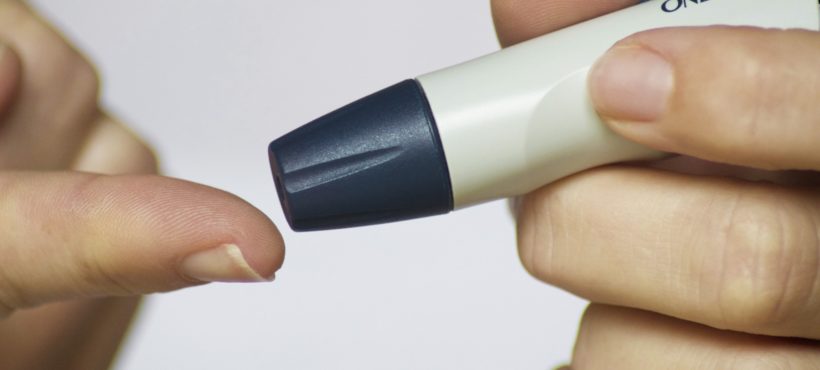
What Is Non Insulin Dependent Diabetes? Comparing Type 1 and Type 2 Diabetes
More than 30 million people in the United States have diabetes. Among them, 90 to 95 percent have type 2 or non-insulin dependent diabetes.
Type 2 diabetes used to occur primarily in people over age 45. Today, however, because of the growing obesity crisis, younger people, even children, are acquiring this disease.
Keep reading to learn the difference between insulin-dependent and non insulin dependent diabetes.
What Is Diabetes?
Diabetes has everything to do with diabetes pathophysiology. The pathophysiology of diabetes refers to the amount of insulin in a body.
Whenever you eat, your body turns carbohydrates into glucose in your bloodstream. Your pancreas releases the hormone insulin, which then transports the glucose to your cells, giving you energy.
This is why a person without diabetes will feel a “sugar rush” or a sudden surge of energy upon eating a high-sugar treat.
If you have diabetes, though, your pancreas does not do its job. For one of a handful of reasons, it does not produce an adequate amount of insulin or any insulin at all sometimes. This problem leads to high blood sugar, which can then lead to a myriad of other problems.
Difference Between Type 1 and Type 2 Diabetes
You’ve most likely heard the terms “type 1” and “type 2” diabetes. Each one has specific characteristics that make them worth understanding. With both types of diabetes, a person is not receiving the amount of insulin needed to function.
The difference between the two lies in why the pancreas isn’t doing its job.
Type One: What Is IDDM
Type one diabetes used to be called juvenile diabetes. Now doctors may refer to it as IDDM or Insulin-dependent diabetes mellitus.
With IDDM, the pancreas simply does not produce insulin. It fails for a handful of reasons.
Sometimes IDDM is caused by an autoimmune condition where antibodies attack your pancreas, damaging it, and making it unable to produce insulin.
Sometimes your genes are the culprit. They can cause the cells in the pancreas to not make insulin. So a genetic predisposition, something completely out of a patient’s control, could cause diabetes.
Regardless of the cause, a type-1 diabetic typically takes insulin shots and has to monitor his or her blood sugar regularly. Modern medicine and technology have revolutionized type-1 diabetes management.
Today diabetics can wear a pump that delivers insulin instead of taking shots. They can also have a patch that monitors their blood sugars and reports them to their smartphones.
For example, a five-year-old in school can wear a patch that monitors her blood sugar. As long as the child’s system is connected to the school’s wi-fi, mom at home or work can see her child’s blood sugar numbers through the tap on an app.
Type Two: Non Insulin Dependent Diabetes
Unlike type 1, type 2 diabetes is not genetic. It often results from a pancreas that has said, “I’m done.” It is tired and stops producing enough insulin for an individual to survive.
This is why we used to see type 2 in older people mostly. Their pancreases had aged and done their job for fifty-plus years. They just stopped functioning effectively.
Because of the obesity crisis among young people in America, we are seeing higher incidents of non-insulin dependent diabetes.
Individuals who weight more than 20 percent over their target body weight qualify as obese. Obese individuals carry a particularly high risk of developing type-2 diabetes.
Obesity causes insulin resistance. So your pancreas still makes insulin, but it cannot make enough insulin. Your body becomes insulin resistant.
Carrying extra weight means you can develop diabetes. This disease can lead to many other health problems like kidney disease, nerve problems, and blindness. Type 2 diabetes also increases your risk of heart disease and stroke.
Type 2 diabetics can take medication that helps stimulate their pancreas to produce more insulin. Thus, until scientists find a cure for diabetes, we will have to depend on medication that can simply control it.
A Plan of Action
If you have non-insulin dependent diabetes, know that you have choices. Your first choice is to listen to your doctor.
1. Take Your Meds
If your doctor does put you on medication, take it. You might think that by sheer will you can right this unhealthy ship, but your doctor put you on medication for a reason.
Begin with the medication and then follow these other steps. You may eventually find yourself not needing your diabetes medication.
2. Lose Weight
Losing weight can lower your AC1 levels. AC1 levels are your average blood sugar levels over the past two to three months. If you are obese or overweight, shoot for losing 10 percent of your current weight.
Weight loss can help with so much more too. It lowers your risk for cardiovascular disease and eases symptoms of depression. It lowers your blood pressure, and you just feel better.
3. Change Your Diet
Start by writing down what you eat on a daily basis. You will be more mindful of what you put in your mouth if you have a record of it.
Focus on eating fresh fruits and vegetables and plenty of fiber. Reduce or eliminate processed sugars from your diet.
4. Exercise
Working out causes your body to use insulin and your muscles to use glucose. It also can boost your mood.
You do not need to join a cross-fit gym or start running marathons. Even just regular work like vigorous chores or a daily, refreshing walk can make a difference. Just start moving.
Be Smart, Stay Healthy
Non insulin dependent diabetes is not a death sentence but rather a wake-up call. If you have developed this disease, take heart. You have choices that can lead you to a better life still.
For all of your medication needs, contact us.


